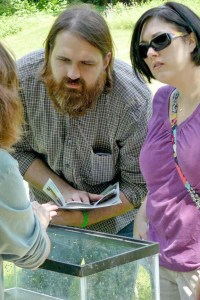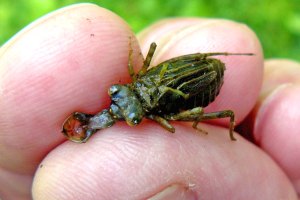
Haiku Hike today (5)
April is National Poetry Month and April 17 is International Haiku Day. It seemed fitting, poetic justice even, to observe both with a weekend Haiku Hike in the nature preserve. Eight humans accepted the challenge.
Red Fox Cabin in
The woods above the quarry
Deserted homestead
Spring itself is a muse that inspires with emerging wildflowers, pale green hints of tree leaves and birds inviting each other to call. With honeysuckle hiking staffs and a memo pad between us, we called out and wrote down words and phrases that described what we were experiencing and used them to create haiku.
One-hour walk turned into two (7)
A sycamore watched us from the opposite bank as we descended into the floodplain. Cranberry Run is showing signs if nutrient overload, with early ropes of algae sounding the alarm. The algae will grow in the low warm water, clogging fish, mollusk, crustacean and insect habitat then decaying to leave them starved for oxygen. Algae was added to our streamside words that included “waterfall”, “nest”, “goose”, “rocks”, “shells”, “cardinal”, “sycamore” and “violet”.

Algae in the stream
Face on the sycamore tree
Saturday hike scenes
We are on a hike
Yellow purple violet
Spring rising from soil
“Shed deer fur” was added to our haiku toolbox. What with David’s land bridge guarded by a nesting goose and a gander in the southeast shallows, we trekked north around the quarry wetland through the mammoth log gateway. David’s honeysuckle-rooting maddock leaned against an old honey locust that he calls the Hand Tree.
Deer sheds in the woods
Goose sitting on land bridge nest
Guarded by her mate
Spring beauties, mayapples, buckeye seedlings and violets in three colors are coming to the light in the floodplain that just last year was overgrown with bush honeysuckle. More deer fur lay at the base of a honeysuckle skinned by rubbing antlers (more power to the whitetails!)
Honeysuckle cleared
Deer fur beside shaggy bark
Birds serenading
Up we walked, past the Settler’s Well and the tall grass prairie. A female bluebird gave us a glance and ducked into a woodpile. Fresh piles of dug soil indicated a activity in the ridge burrows downhill from Nature’s Classroom. As we tiptoed past the mama goose, she raised her head but allowed us to move along without incident. Two black-capped chickadees spun in a quarrel. We hiked up and out, ate donut holes and ambled south to visit the farm animal sanctuary.
Time flies with poets (5)
(Thanks to the creative, hiking poets who wrote the haikus shared in this post.)



 Tonight’s Golden Snitch Walk was called on account of no snitches. In mid-March the evening air was buzzing with them. As I closed the gate on evening chores, two American Woodcocks–the absolute model for J.K. Rowling’s glittery winged ball, or I’ll eat my Ravenclaw hat–twisted in their funnel-cloud dance not more than 20 feet above me.
Tonight’s Golden Snitch Walk was called on account of no snitches. In mid-March the evening air was buzzing with them. As I closed the gate on evening chores, two American Woodcocks–the absolute model for J.K. Rowling’s glittery winged ball, or I’ll eat my Ravenclaw hat–twisted in their funnel-cloud dance not more than 20 feet above me.

 No frog egg masses string the surface yet. There are frogs and toads clucking, burring and trilling from the quarry’s edge northeast across the vernal pools of Coburn’s Bottom to the property line at Riley Creek. All those Hey-Baby-Baby-Babies mean tadpoles are brewing in the slurry. A toad hops across the trail in front of me, not a snitch but gold all the same from the lowering sun and amphibian afterglow.
No frog egg masses string the surface yet. There are frogs and toads clucking, burring and trilling from the quarry’s edge northeast across the vernal pools of Coburn’s Bottom to the property line at Riley Creek. All those Hey-Baby-Baby-Babies mean tadpoles are brewing in the slurry. A toad hops across the trail in front of me, not a snitch but gold all the same from the lowering sun and amphibian afterglow.
 A dozen squash and a bag of apples are all that remain from the December windfall from Hoehns Orchard. The fruits flash froze in the bed of the Ranger yesterday. They’ll thaw this weekend as temperatures jump from this morning’s -8°F to 52°F on Monday. Buddy and Lucy will love their sweet squashy pudding. Tonight, the geese will scavenge for apple bits after the pigs shred the applesicles.
A dozen squash and a bag of apples are all that remain from the December windfall from Hoehns Orchard. The fruits flash froze in the bed of the Ranger yesterday. They’ll thaw this weekend as temperatures jump from this morning’s -8°F to 52°F on Monday. Buddy and Lucy will love their sweet squashy pudding. Tonight, the geese will scavenge for apple bits after the pigs shred the applesicles. For 36-hours, the wind bore a topsoil blown from tilled fields to the west, a haze so thick that it coated trees, cars and ground with a gray film. Rays of Wednesday sunrise shown amber. Even with wind chill warnings outside, our boots left muddy tracks in the foyer. I wiped brown frost from the skin left exposed by my face mask. Snow and rain are predicted to wash down hill and stream this weekend.
For 36-hours, the wind bore a topsoil blown from tilled fields to the west, a haze so thick that it coated trees, cars and ground with a gray film. Rays of Wednesday sunrise shown amber. Even with wind chill warnings outside, our boots left muddy tracks in the foyer. I wiped brown frost from the skin left exposed by my face mask. Snow and rain are predicted to wash down hill and stream this weekend.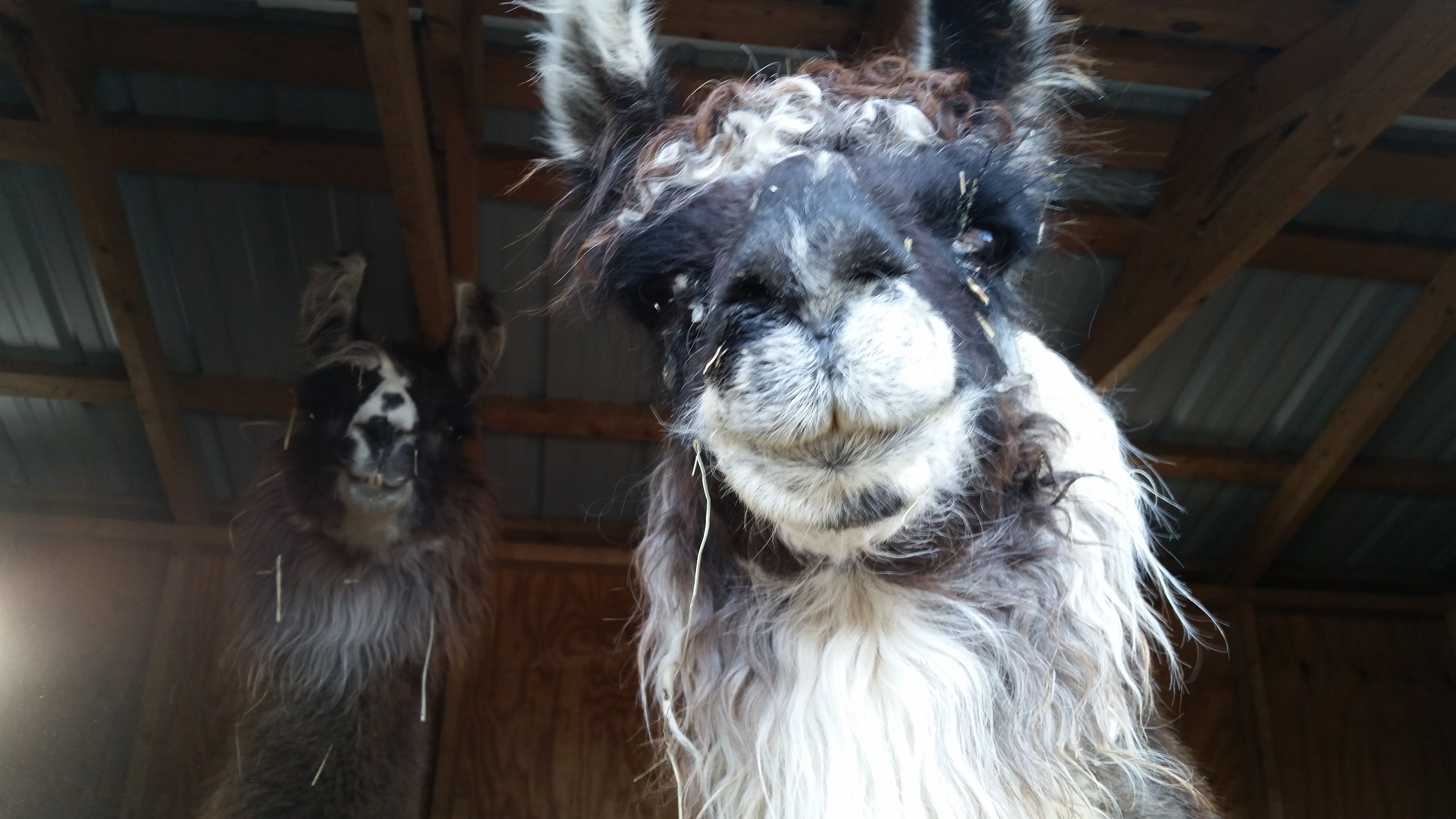
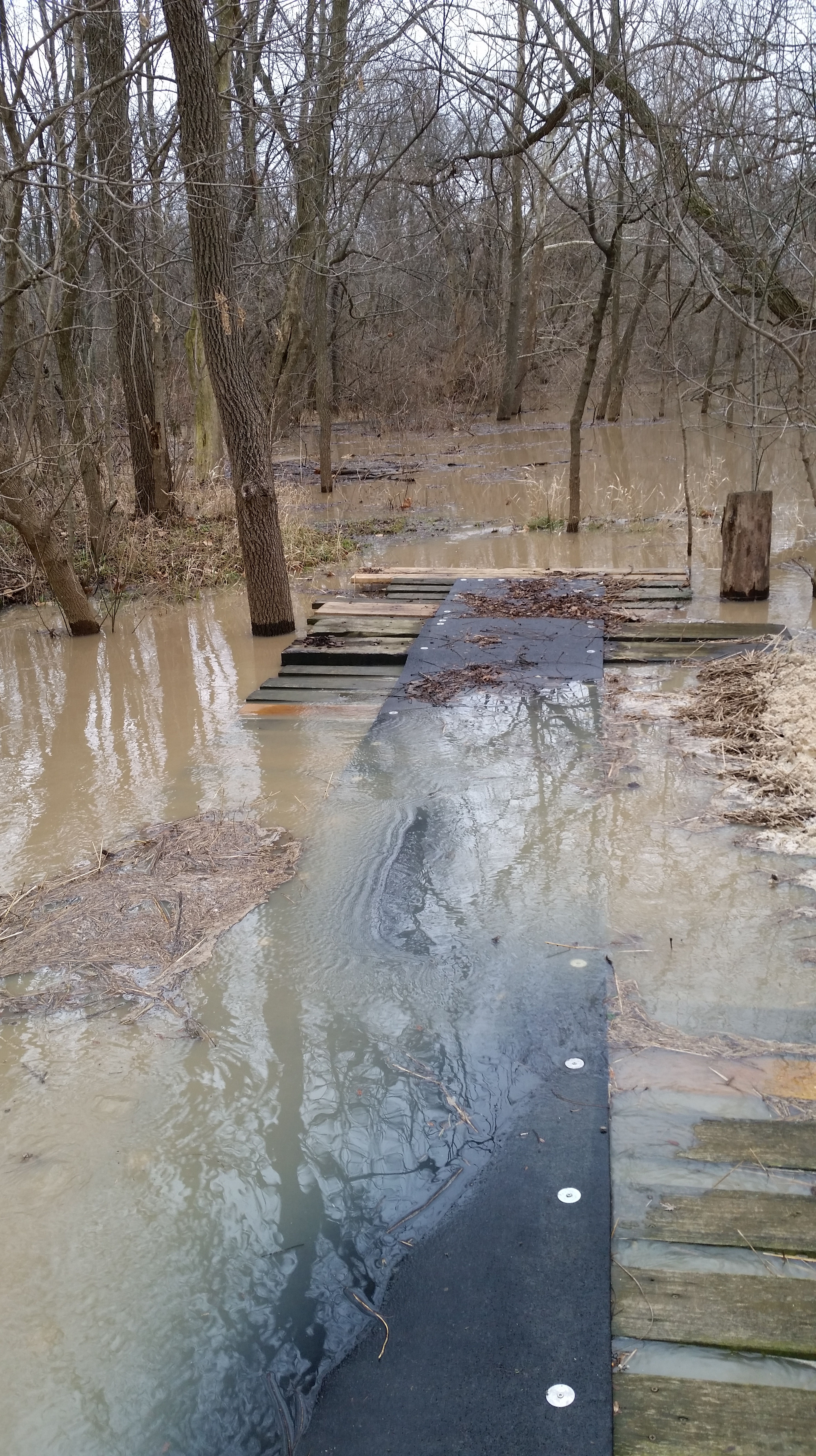






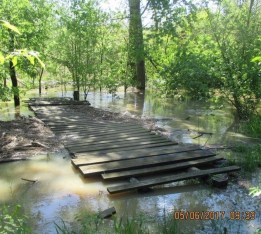 Two weeks ago, heavy rain flooded the quarry. Kayakers paddled through the preserve, weaving through trees well above the Run’s banks. The footbridge floated, held fast by heavy chains, thanks to
Two weeks ago, heavy rain flooded the quarry. Kayakers paddled through the preserve, weaving through trees well above the Run’s banks. The footbridge floated, held fast by heavy chains, thanks to  absent
absent  The week before that, Steve came back to the house with a bucket of fairy shrimp in quarry water. I love to watch these tool in healthy circles, especially since their presence tells me that the wetlands are doing such fine work sponging sediment and impurities in the floodplain. The pools did such a great job that the bucket also contained a salamander larva with waving spaniel-ear-gills, and a predaceous diving beetle nymph.
The week before that, Steve came back to the house with a bucket of fairy shrimp in quarry water. I love to watch these tool in healthy circles, especially since their presence tells me that the wetlands are doing such fine work sponging sediment and impurities in the floodplain. The pools did such a great job that the bucket also contained a salamander larva with waving spaniel-ear-gills, and a predaceous diving beetle nymph.

